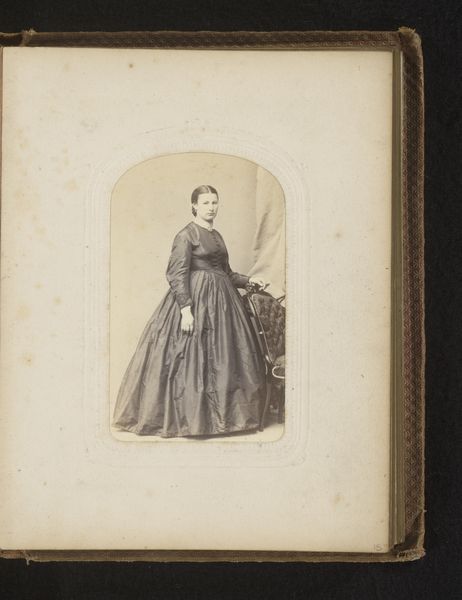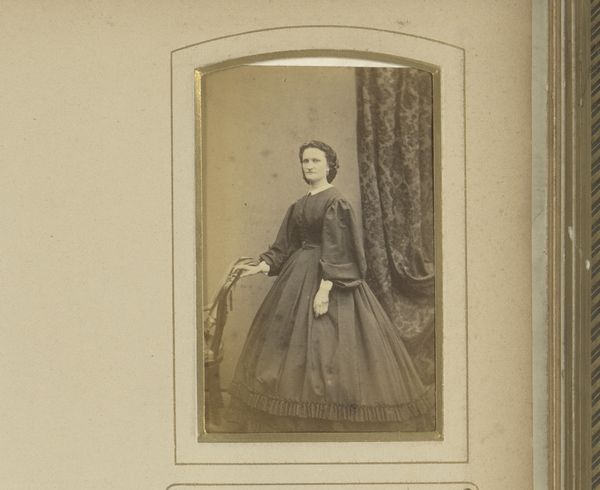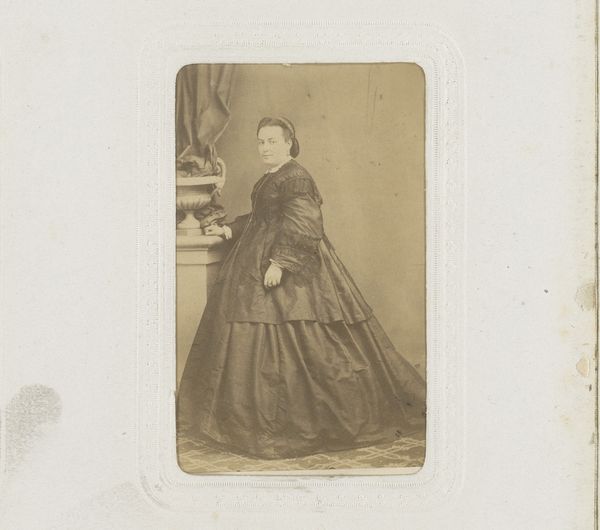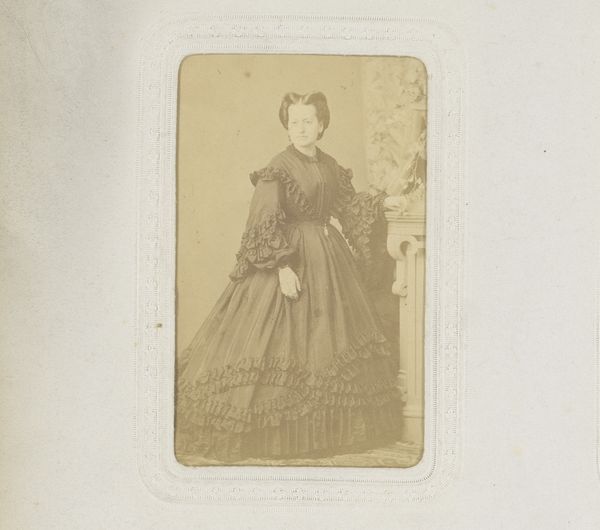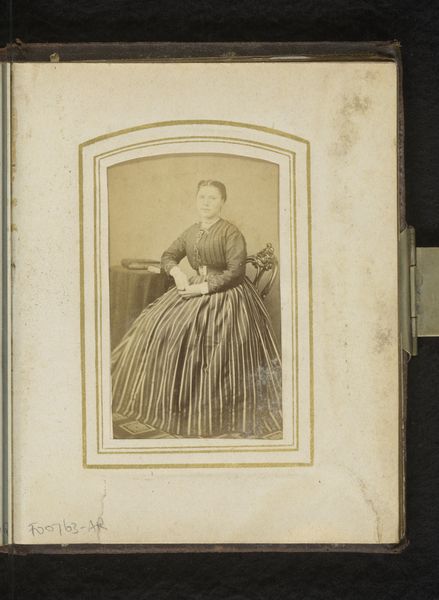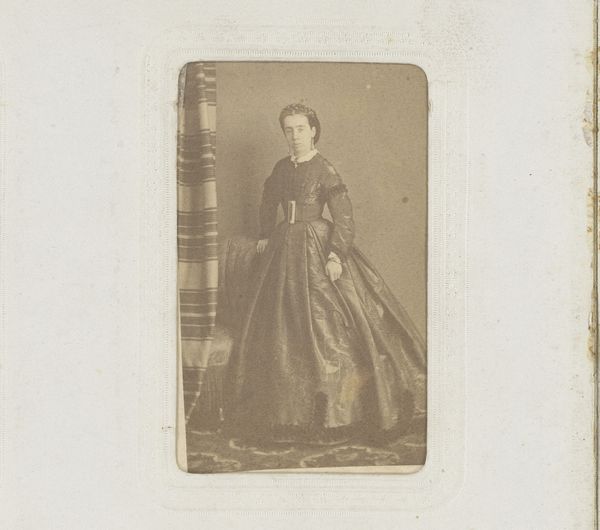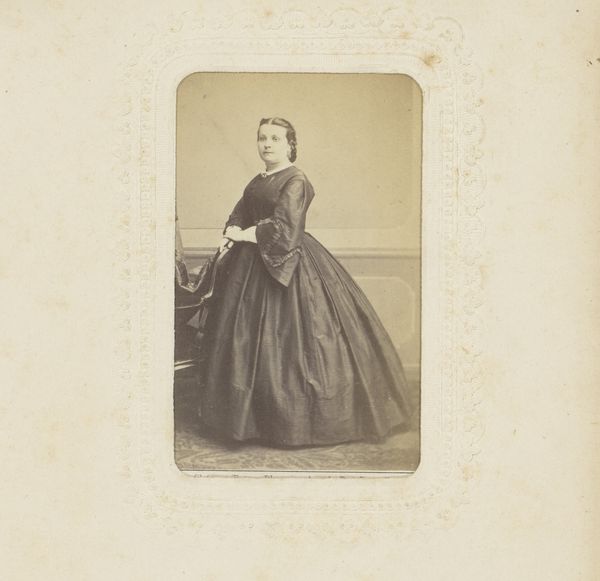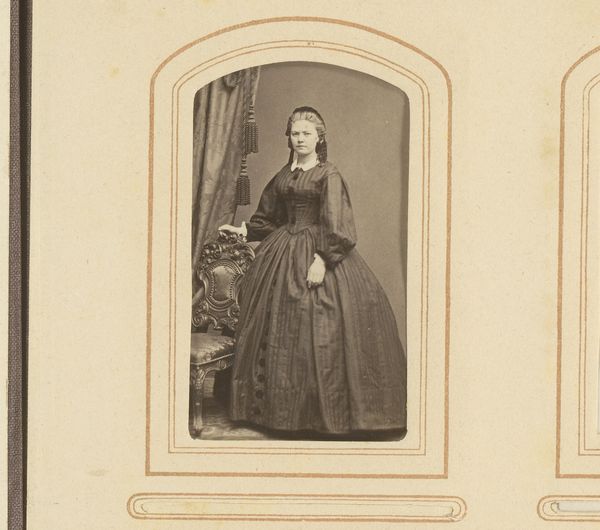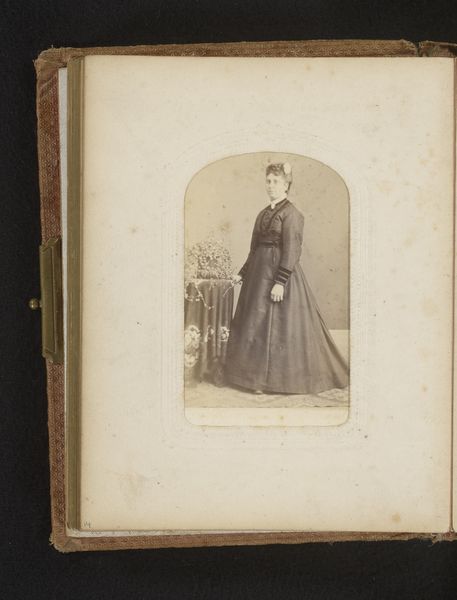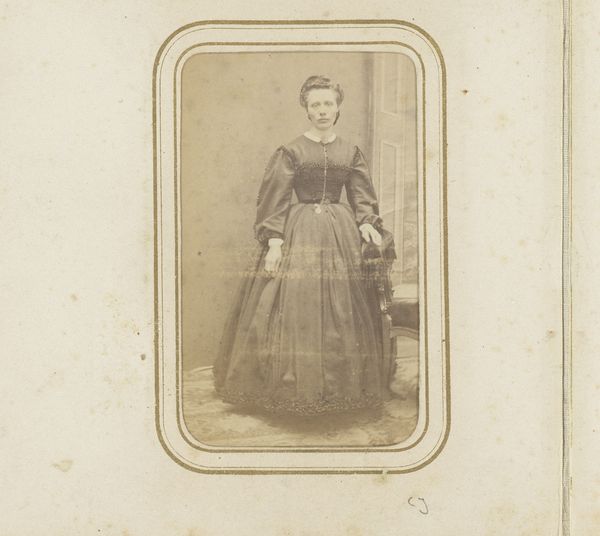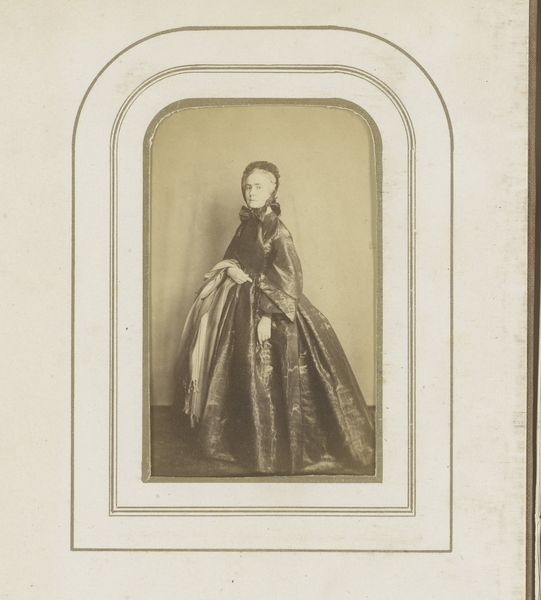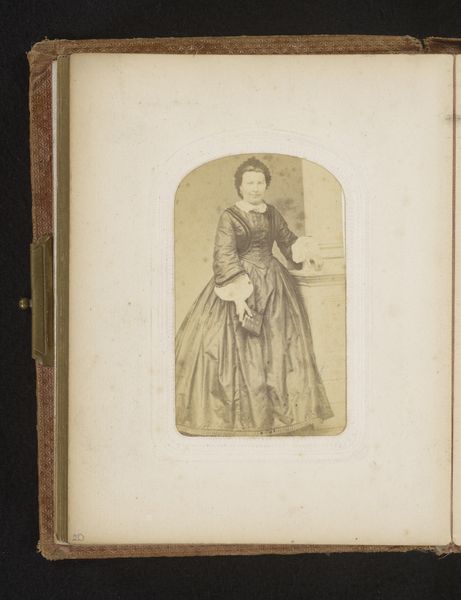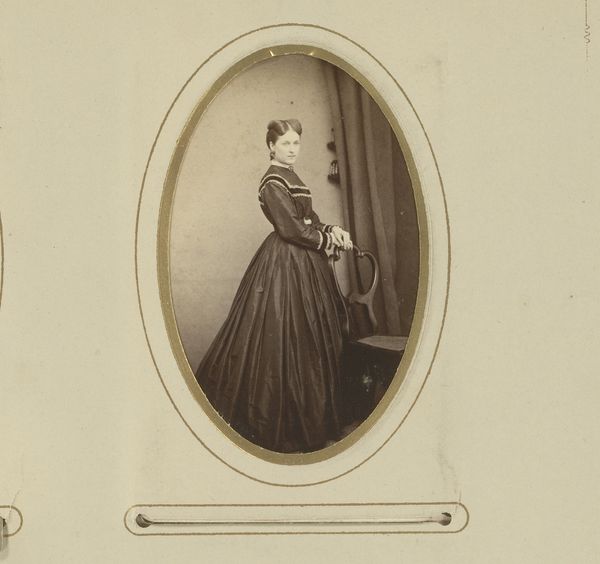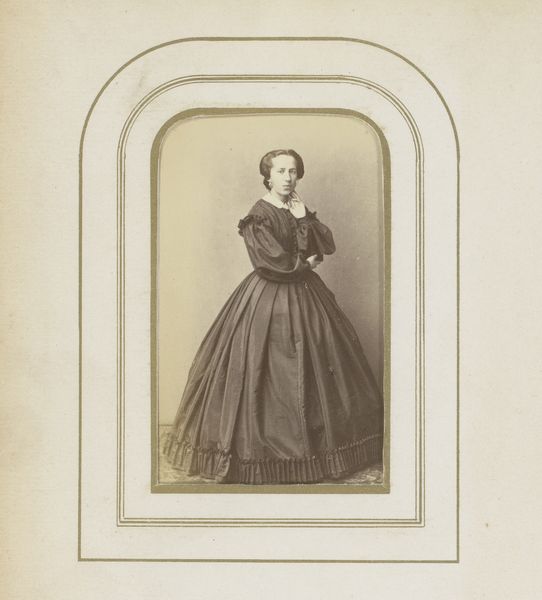
photography, gelatin-silver-print
#
portrait
#
photography
#
coloured pencil
#
gelatin-silver-print
#
genre-painting
Dimensions: height 83 mm, width 51 mm
Copyright: Rijks Museum: Open Domain
Curator: Welcome. Here we have a photographic portrait, "Portret van een vrouw, staand bij een stoel," or "Portrait of a Woman, Standing by a Chair," made with the gelatin silver process, sometime between 1860 and 1900. The photographer is Theodor Huth. Editor: What strikes me first is how incredibly contained she appears. She's framed within a frame, within the album, within the image. There's a formality, a certain stillness, and a… wistfulness? I can’t help but wonder what she’s thinking. Curator: Indeed. Studio portraits like these were carefully constructed performances. Her posture, her dress, even the placement of the chair were all carefully considered to convey status, respectability, and certain ideals of womanhood at the time. It's a staged reality designed for public viewing and posterity. Editor: Yet, within that constructed reality, you see glimpses of the individual. There’s a subtle energy to her face, like a tightly wound spring. I mean, look at how her hand rests so lightly on that chair! There’s something both elegant and defiant in that. Curator: That’s astute. The rise of photography democratized portraiture, but it also became a powerful tool for social control, dictating standards of beauty and behavior. Photography studios were commercial enterprises, shaping public image in ways both obvious and subtle. Editor: It’s like she’s caught between two worlds—the rigid expectations and her own inner life. It’s also really fascinating how that neutral background almost forces you to focus on her and that beautiful costume! I wish more of these photographs would let you in! What did she want to say? Curator: And therein lies the enduring power of the portrait. It provides a record, however mediated, of an individual's presence in time, inviting us to consider the social context in which they lived, but also to engage with the enigma of the human spirit. Editor: Looking at this image makes me question whether this photograph is hiding just as much as it shows... or, maybe more? These sorts of artworks invite introspection: about history, about societal structure and about what is not represented!
Comments
No comments
Be the first to comment and join the conversation on the ultimate creative platform.
